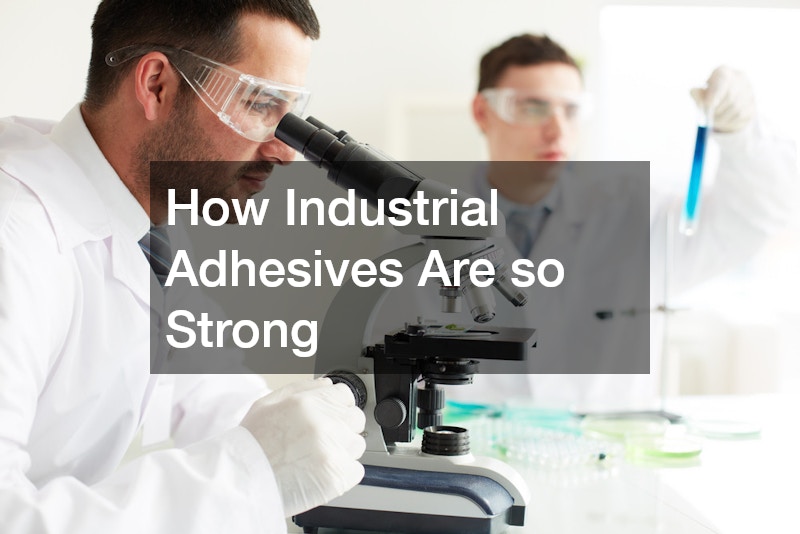
Industrial adhesives are crucial components in modern manufacturing and construction, known for their remarkable strength and versatility. They are designed to bond various materials under extreme conditions, outperforming traditional mechanical fasteners like screws and bolts. Understanding what makes industrial adhesives so strong can help appreciate their importance in various applications.
Chemical Composition
The strength of industrial adhesives primarily comes from their chemical composition. These adhesives are formulated with specific polymers and resins that create strong molecular bonds.
Epoxies, polyurethanes, cyanoacrylates, and acrylics are some of the common types of industrial adhesives. Each type has unique properties tailored to bond specific materials, such as metals, plastics, ceramics, and composites. The chemical structure of these adhesives allows them to form robust bonds at a molecular level, ensuring high strength and durability.
Surface Interaction
Industrial adhesives work by interacting with the surfaces they bond to at a microscopic level. When applied, the adhesive fills in the microscopic irregularities on the surfaces, creating a large contact area. This process, known as wetting, ensures that the adhesive forms a strong mechanical interlock with the surfaces. Additionally, some industrial adhesives can chemically react with the materials they bond to, further enhancing the bond strength. This combination of mechanical and chemical bonding is a key factor in the superior strength of industrial adhesives.
Curing Process
The curing process of industrial adhesives is another critical factor in their strength. Curing involves the transformation of the adhesive from a liquid or semi-liquid state to a solid state, creating a strong and durable bond. This process can be initiated by heat, UV light, or chemical reactions. For example, epoxy adhesives typically require mixing two components that react chemically to harden, while UV-curable adhesives solidify upon exposure to ultraviolet light. The controlled curing process ensures that the adhesive achieves its maximum bonding potential, contributing to its strength.
Load Distribution
Unlike mechanical fasteners, which concentrate stress at specific points, industrial adhesives distribute loads evenly across the bonded surfaces. This uniform load distribution reduces the likelihood of material failure and enhances the overall strength of the bond. By spreading the stress over a larger area, industrial adhesives can withstand higher loads and offer better performance under dynamic conditions, such as vibrations and thermal expansion.
Environmental Resistance
Industrial adhesives are formulated to resist various environmental factors, including moisture, chemicals, temperature fluctuations, and UV radiation. This resistance ensures that the bonds remain strong and durable even under harsh conditions. For instance, marine-grade adhesives are designed to withstand prolonged exposure to water and salt, while high-temperature adhesives can maintain their strength in extreme heat. The ability to endure these environmental challenges without degrading is a testament to the robustness of industrial adhesives.
.

